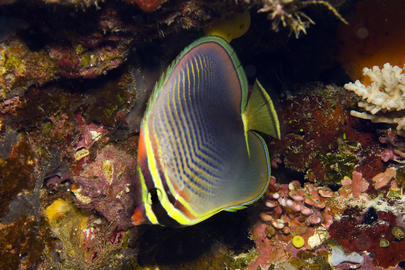
The rising height of the dorsal and anal fins on this butterflyfish give this fish an overall triangular shape. The Eastern triangular butterflyfish has alternating chevron-markings that are gray and yellow. Its tail fin is yellowish gray.

The rising height of the dorsal and anal fins on this butterflyfish give this fish an overall triangular shape. The Eastern triangular butterflyfish has alternating chevron-markings that are gray and yellow. Its tail fin is yellowish gray.
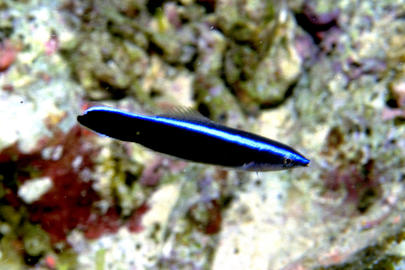
White to yellowish head and forebody that becomes bluish towards tail. Dark stripe that extends from the snout and becomes thicker toward the tail. Juvenile individuals are navy blue with a neon blue stripe from snout to tail.
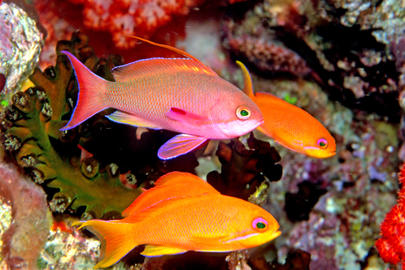
Male: Shades of red with yellow spots on scales or shades or purple with tints of yellow/green. Purple blotch on outer pectoral fin. Long third dorsal spine.
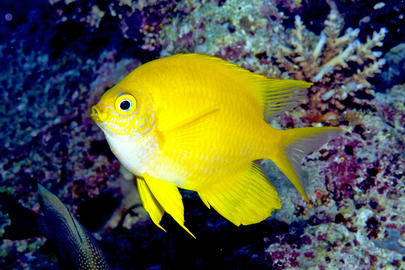
The golden damsel is indeed golden. No other noticeable markings are on the golden damsel except for faint blue rings around the eyes. This deep-bodied damselfish has long, pointed dorsal and anal fins.
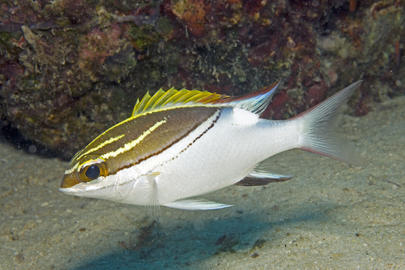
The bridled monocle bream has a grayish brown upper body with two to three, yellowish white bands. The lower body is white. A black-edged white band extends from below the eye to the back half of the dorsal fin. The first half of the dorsal fin is yellow. This bream also has a large white blotch underneath the back half of the dorsal fin.
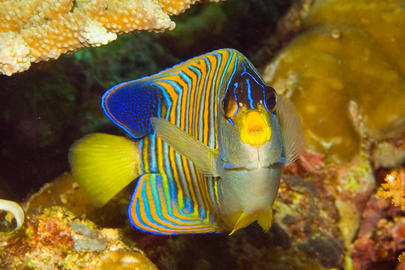
Yellow-orange color with 7-8 bluish-white dark edged bars. Bright yellow tail and the dark eyes outlined in bright blue. Blue and orange bands on anal fin.
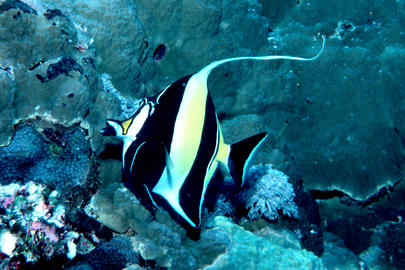
Three wide black and two pale yellow bars. Long trailing dorsal fin filament. Yellow saddle marking on long snout.
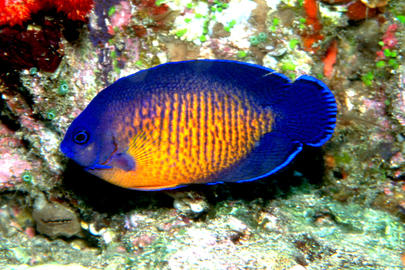
Red orange under color with narrow blue bars, head and fins deep blue to purple. Two spines extend from lower gill cover.
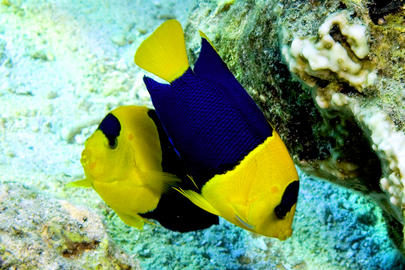
Bright yellow head and forebody, deep blue behind with yellow tail. A blue saddle across nape extends to eyes.
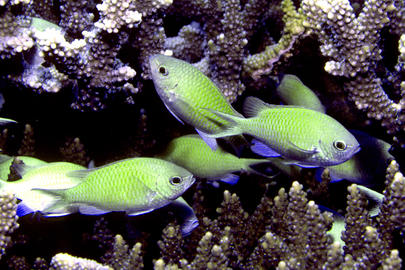
This species is identified primarily by the bright blue-green wash over its entire body. Unlike similar species, there is no black spot at the base of the pectoral fin. This species tends to form large schools over shallow branching coral thickets.